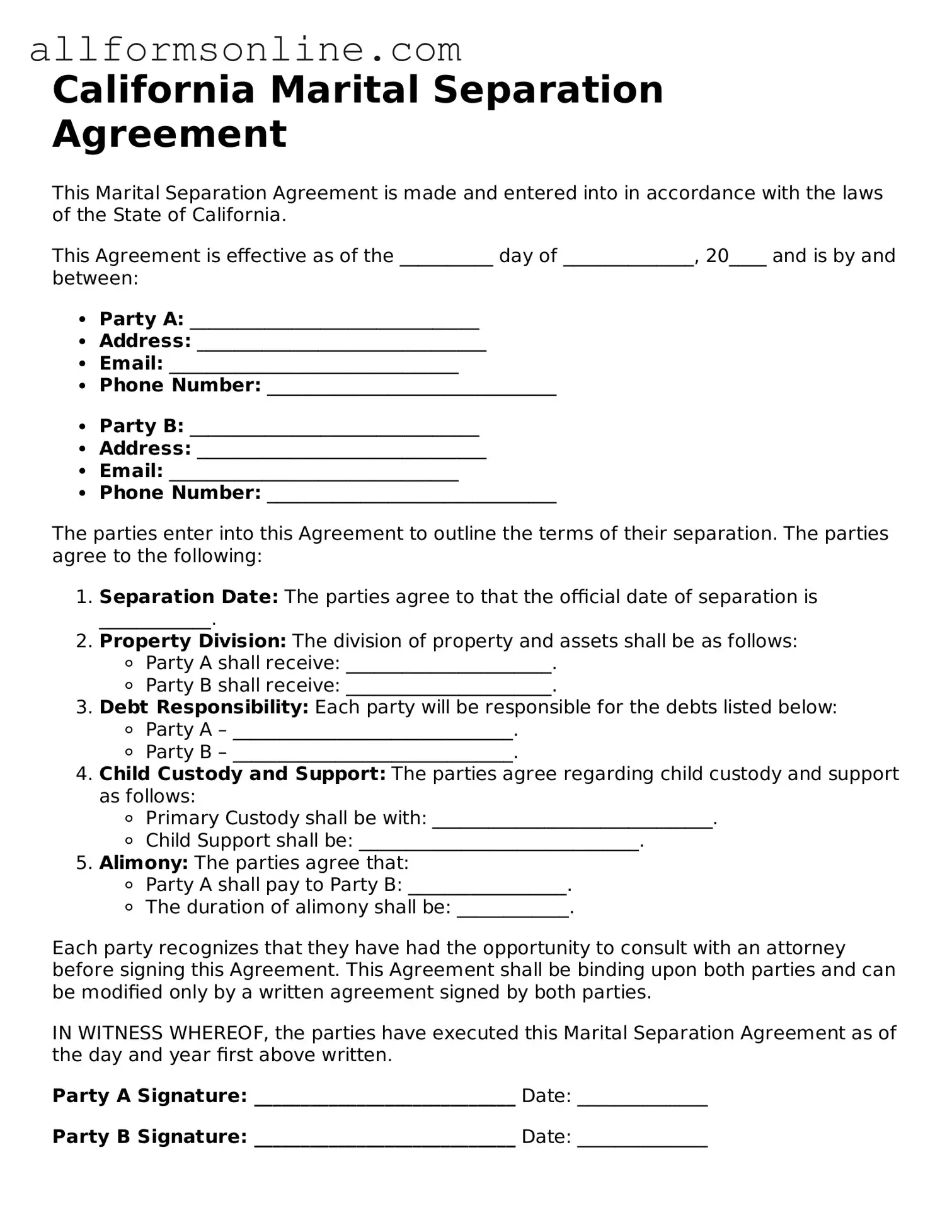What is a California Marital Separation Agreement?
A California Marital Separation Agreement is a legal document that outlines the terms of separation between spouses. It addresses issues such as property division, child custody, visitation rights, and spousal support. This agreement helps clarify each party's rights and responsibilities during the separation period.
Is a Marital Separation Agreement legally binding?
Yes, once both parties sign the agreement, it becomes legally binding. However, it is important for both parties to understand the terms before signing. If either party fails to comply with the agreement, it can be enforced in court.
Do I need an attorney to create a Marital Separation Agreement?
While it is not legally required to have an attorney, it is highly advisable. An attorney can help ensure that the agreement complies with California law and adequately protects your interests. They can also provide guidance on complex issues that may arise during separation.
Can a Marital Separation Agreement be modified?
Yes, a Marital Separation Agreement can be modified if both parties agree to the changes. It is recommended that any modifications be documented in writing and signed by both parties to avoid future disputes.
What happens if we reconcile after signing the agreement?
If you reconcile after signing the Marital Separation Agreement, you can choose to void the agreement. This should be done in writing, and both parties should acknowledge the reconciliation. If you decide to separate again, the original agreement may still be in effect unless altered.
How does a Marital Separation Agreement affect child custody?
The agreement can specify custody arrangements and visitation schedules. It is essential to prioritize the best interests of the child when drafting these terms. Courts generally uphold custody agreements that are mutually agreed upon by both parents.
What should be included in a Marital Separation Agreement?
A comprehensive Marital Separation Agreement should include details about property division, debts, child custody and support, visitation rights, and spousal support. Additionally, it should outline how future disputes will be resolved and any other specific agreements made by the parties.
How long does it take to finalize a Marital Separation Agreement?
The time it takes to finalize a Marital Separation Agreement varies depending on the complexity of the issues involved and the willingness of both parties to negotiate. It can take anywhere from a few weeks to several months. Open communication can expedite the process.
